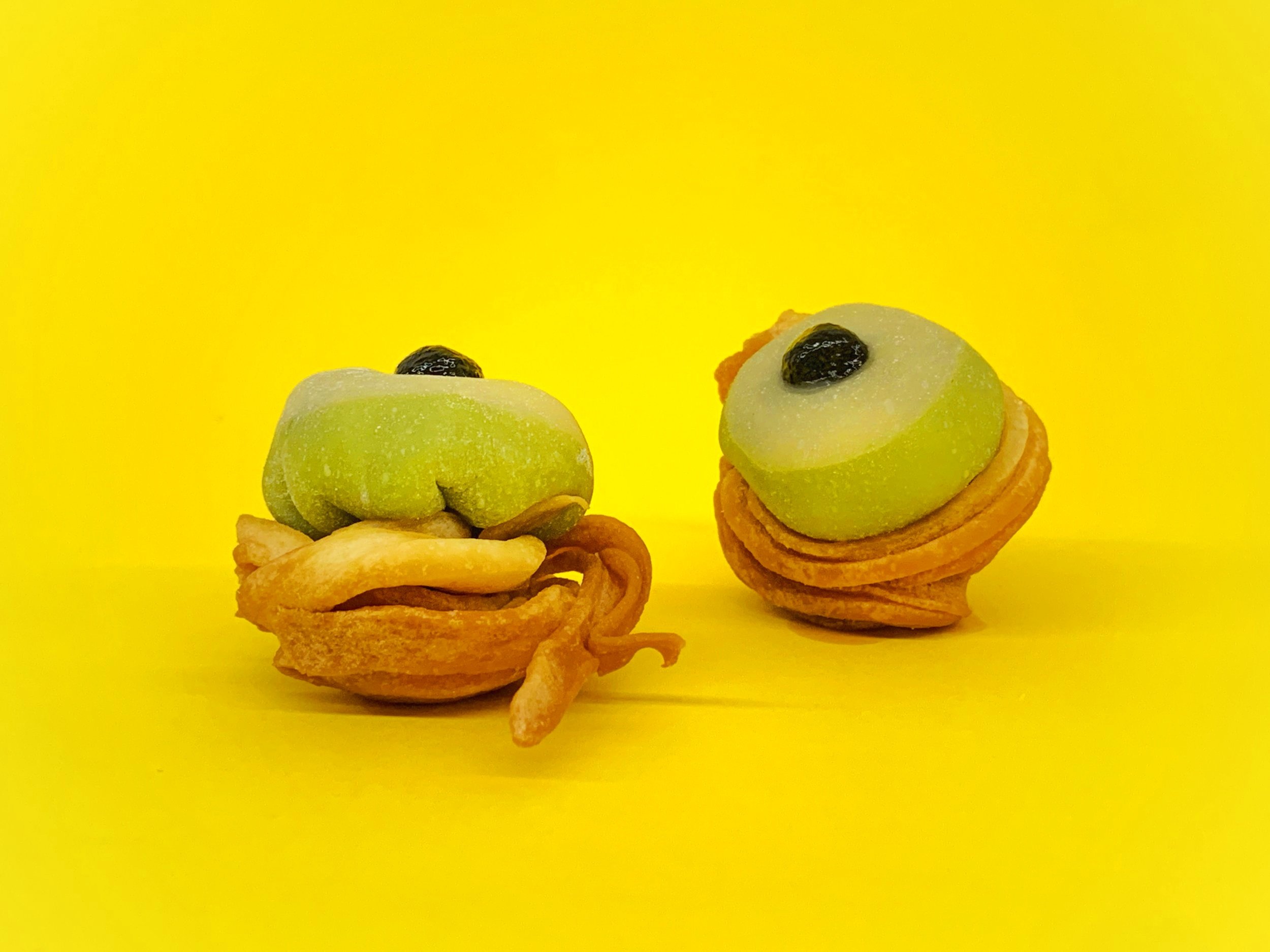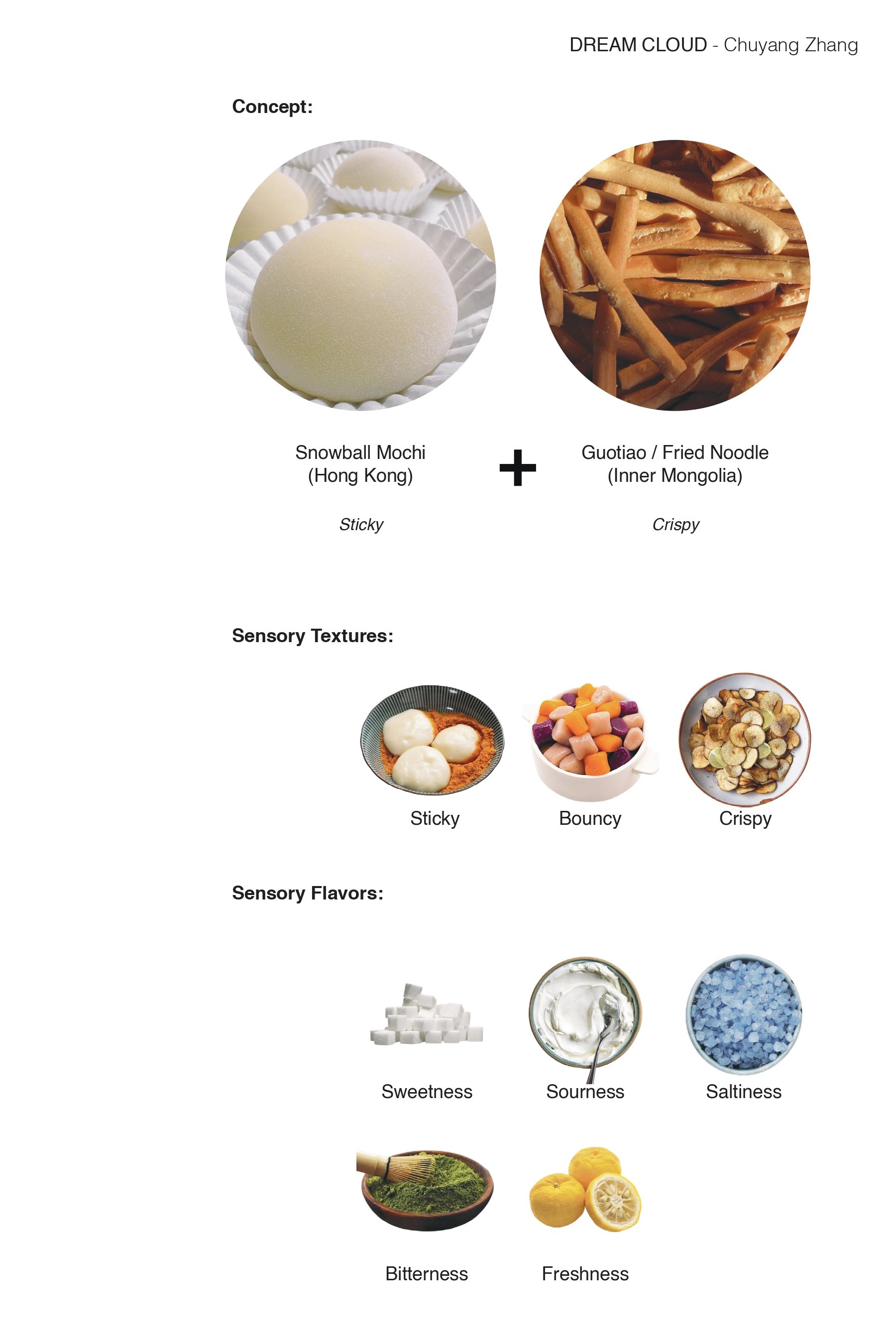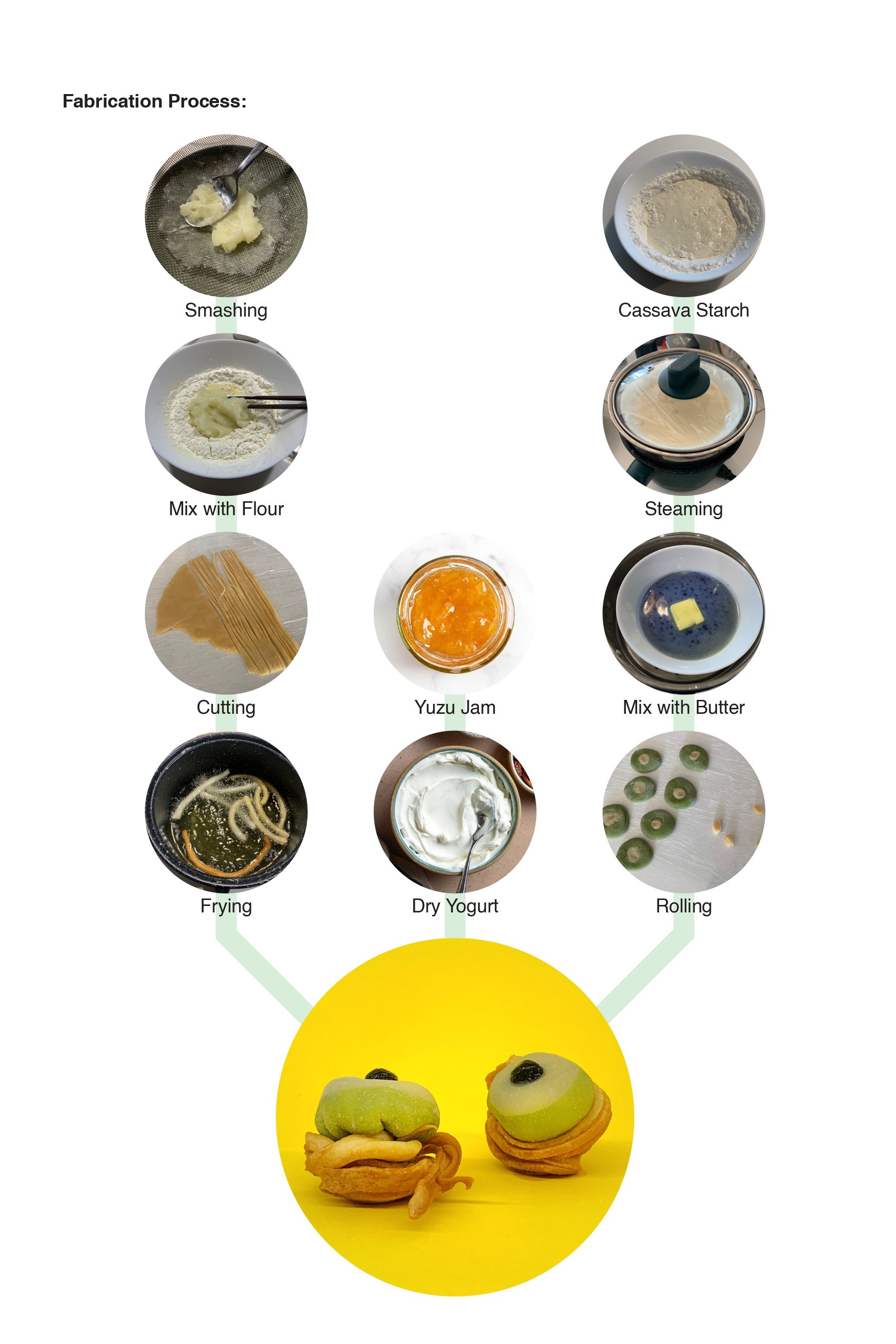
“A fleeting dream beyond the clouds,
where textures, flavors, and memories quietly intertwine.”
Dream Lantern
This food design explores the diverse textures and flavors of cassava, transforming it into a multi-sensory dessert inspired by both Mongolian and Hong Kong culinary traditions. The design combines a soft, chewy yogurt snowball mochi filled with tangy yuzu sauce, balanced on a salty, crispy base of fried noodle strips. Each bite delivers a harmonious journey of sweet, sour, salty, and crunchy sensations, evoking the serene beauty of clouds drifting above the grasslands. Beyond taste, this dessert invites diners to reflect on the dialogue between tradition and modernity, celebrating cultural heritage through an innovative culinary experience.
What is Food Design?
Food design is the practice of applying design thinking, methods, and aesthetics to the experience of food — not just what we eat, but how, where, and why we eat it. It connects the principles of industrial design with the emotional, sensory, and cultural dimensions of food, exploring how form, material, ritual, and meaning come together on the plate and in the mind. It treats food as both material and medium, capable of telling stories, sparking emotions, and designing memories.
Through food design, designers can rethink traditional recipes, create innovative dining tools, design multi-sensory culinary experiences, or even propose sustainable ways of eating — making food not only nourishment, but also an artful and thoughtful interaction.
Sensory Experience
⋆
Tradition & Innovation
⋆
Material & Texture
⋆
Culture & Identity
⋆
Emotional Connection
⋆
Storytelling
⋆
Sensory Experience ⋆ Tradition & Innovation ⋆ Material & Texture ⋆ Culture & Identity ⋆ Emotional Connection ⋆ Storytelling ⋆



